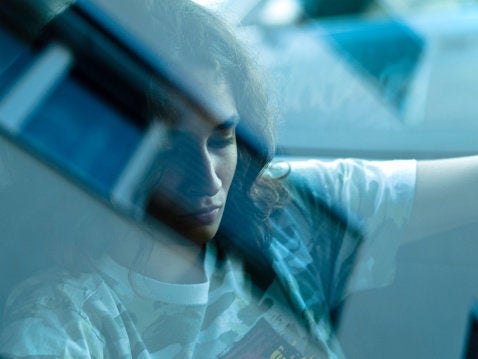
Never before have there been more technologies available or in the works to help drivers stay alert while behind the wheel.
For years, automakers like Mercedes-Benz, Subaru, Nissan and Ford have implemented technology addressing drowsy driving, such as pre-collision systems and lane-departure warning systems, in some of their upscale vehicles.
Some automakers aren't stopping there. According to PC Magazine, Volvo is expanding on its Driver Alert Control technology, which it unveiled in 2007, with a new system that uses small LEDs to illuminate a driver’s face and monitor it for physical signs of drowsiness.
Guttersberg Consulting, a German firm, is also testing a "smart" steering wheel that detects driver weariness. It is reportedly in talks with automakers who are interested in the smart wheel.
Wearable solutions are also in development, such as a Bluetooth headset called the Vigo that monitors drivers' blinking and body movements, according to CNN. And earlier this year, 14-year-old Katherine Wu, a Maryland student, invented a “Driver’s Companion” mindwave mobile headset that relies on EEG waves and blinking to detect drowsiness and warn drivers they may need to pull off the road.
But despite the ever-increasing options for drivers, the question remains -- does any of it work? Lane-departure warning systems have been found to reduce the risk of drivers veering off-road by 40 percent, but few of the other technologies have been the subject of rigorous research.
In an interview with HuffPost, spokesmen for the National Sleep Foundation, a D.C.-based sleep education and research group, noted that some of the new technologies are showing signs of effectiveness and can even help with their group’s efforts to spread awareness of the issue. But there is no silver bullet.
“The technology is racing ahead,” Tom Clifford, the NSF’s vice president of marketing and development, told HuffPost, “but I don’t know that there’s one answer or one thing I can point to and say so-and-so’s new lane departure technology is the real groundbreaker that will change this thing.”
Jeff Evans, the group’s government affairs manager, added that technologies like Australian company Seeing Machines’ driver monitor system are particularly impressive. The system, developed for automotive supplier Continental, detects muscle tone in the face in order to evaluate and warn drivers’ of their drowsiness
Still, “the only real answer” to the problem, Evans added, is fully autonomous driving.
While such vehicles are already on the road, they are not commercially available and it will be a number of years before they are widespread, if it happens at all.
The same is true of driver monitor systems, which are not yet standard-issue, though that could change before long too.
“It soon will be a package in every car,” Evans said of systems like the “Super Cruise” system GM is introducing next year.
In the meantime, sleep advocates are continuing to work on the bigger picture. The NSF is convening a consensus work group ahead of its annual conference next month in McLean, Virginia, to establish a new threshold definition of what level of sleep deprivation qualifies as drowsy driving. It is part of their effort to make an issue that has traditionally lived in a gray area more black and white.
“Our main goal is that people recognize sleep is important to their overall health and well-being,” Clifford said. “You’re killing yourself if you get on the highway and drive with no sleep, but you’re also doing your body and others a great disservice if you don’t get a good night’s sleep.”
The statistics on drowsy driving are, indeed, alarming.
Sleep-deprived drivers are responsible for an estimated one in five accidents and research has shown that it is just as dangerous as drunk driving.
The practice remains relatively common, too. One in four drivers admit they’ve gotten behind the wheel of a car while drowsy within the previous month alone and 41 percent of respondents to a recent national poll say they’ve fallen asleep while driving at least once during their lifetime.
Also on HuffPost:

